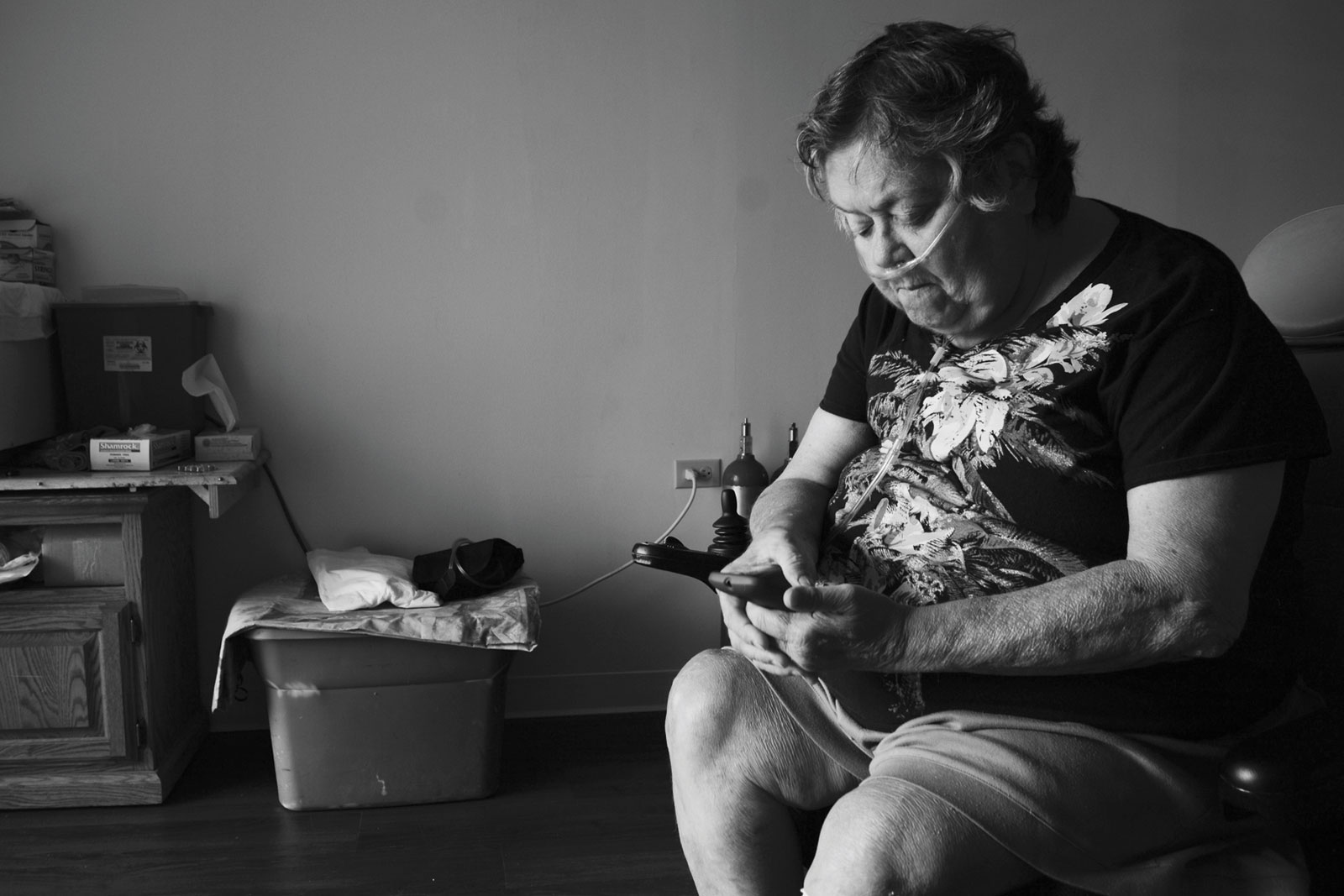The Local newsletter is your free, daily guide to life in Colorado. For locals, by locals.
The 16-pound oxygen tank is heavy on her lap, but Alice Bozeman keeps the aluminum cylinder there, just in case. The 68-year-old’s lungs are weakened from chronic obstructive pulmonary disease (COPD) and a lifelong battle with asthma. She needs a consistent flow of O2 to stay alive, and the bag that would attach the tank to her wheelchair is too full of clothes and medicine. She’s gotten used to keeping everything she needs to survive close by. After spending nine months in a homeless shelter, she learned to treat her chair like a six-square-foot home.
If resources for Denver’s homeless are finite, help for the elderly—an estimated 17.9 percent of the people who’ve taken the metro area’s vulnerability survey for housing—is downright scarce. There is only one shelter dedicated to homeless elderly: Senior Support Services’ 4,000-square-foot facility in the Uptown neighborhood helps about 2,200 people, half of whom are both disabled and homeless. Bozeman spent her days there this spring, maneuvering between tables and through tight walkways filled with hundreds of Denver’s in-need seniors.

Bozeman receives a monthly Social Security check for about $1,200 and applied for subsidized housing in 2011. She still hadn’t gotten a slot in 2014, when she fell and broke her kneecap. (She estimates she’s submitted more than 40 housing applications over the past four years.) While she waited for a room, she relied on the generosity of others for help, especially after two subsequent knee surgeries. On a September night in 2014, she checked in at Catholic Charities Samaritan House and slept next to some 350 others who also had nowhere else to go.
Routine activities—showering, changing clothes, carrying around oxygen tanks—were made more difficult by living in a shelter. Bozeman stayed at Samaritan House, a shelter in RiNo, for nine months. Even as a disabled woman, she was not guaranteed one of Samaritan’s overflow cots. In the evening, she’d have to wait, with hundreds of others, for the doors to open after 6 p.m.—regardless of the weather. A nurse, Kelly Orr, would meet Bozeman while she waited to switch out old air tanks for new ones and to administer insulin shots. Sometimes they’d warm up in Orr’s car, watching women older than Bozeman stand in line through the fogged-up glass.
Bozeman’s fragile body deteriorated. In March, she dropped an oxygen tank on her leg and gouged her shin. The gaping wound developed an infection, another health crisis: Since she became homeless in 2014, Bozeman had suffered a heart attack, had several respiratory infections, and had been hospitalized six times. She started to think she would die without ever having a place to call home.
Then, this past May, it happened: Her name appeared at the top of a waiting list. She moved into a new apartment near the Cherry Creek reservoir where simple things, like having a place to store extra oxygen tanks and sleeping in a hospital-grade bed, feel like luxuries. A rosy hue has returned to her cheeks. Her shin has finally healed. Her breathing is less labored. All are signs of progress, even though Bozeman’s health probably won’t return to what it was before she became homeless. Her psyche might not either: She still has nightmares about the elderly women waiting in the cold.








